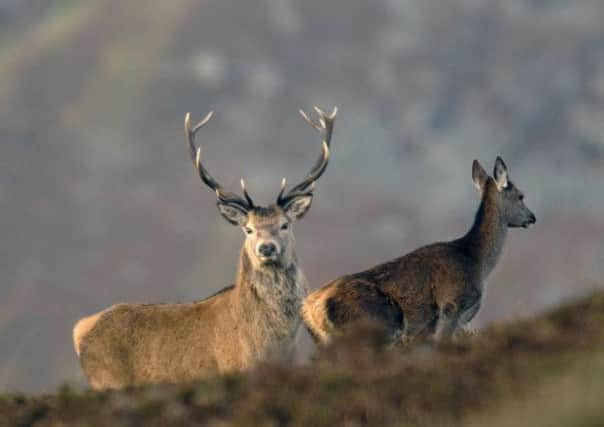Forestry Commission Scotland’s £5m from deer culls


Around 30,000 deer are shot on national forestry estate land each year in order to prevent overpopulation and to protect the 85 million young trees growing.
A large proportion are sold on to meat dealers from the culls and the price of venison has increased by 50 per cent in three years.
Advertisement
Hide AdAdvertisement
Hide AdThe cull Forestry Commission Scotland (FCS) property last year brought in £1.52 million compared to £991,000 in 2009.
A spokesman for FCS, which is responsible for around 9 per cent of Scotland’s land area, said it spends £1.5 million annually on deer fencing around estate property and another £3.7 million on meeting the costs of killing the deer.
These include the costs of deer larder, transportation and hiring professional contractors.
He added: “Income from venison sales represents a very small portion of our total revenue stream but is nonetheless very welcome in off-setting some of the considerable costs of sustaining deer management across the national forest estate.”
“Venison supply tends to be seasonal and aimed mostly at the Scottish or UK home market and the majority of deer, approx 25,900, culled by our own Wildlife Rangers or by professional contractors, were quality deer carcasses (ie ones that met Scottish Quality Wild Venison Assurance Scheme standards) that went directly to the Scottish venison industry.”
Most go to one Scottish Game Dealer via a long-term contract.
Christian Nissen, managing director of Highland Game, which has the contract for buying deer carcasses from FCS, said that business is booming with markets also now opening up overseas.
He said: “We buy a significant volume from the national forest estate.
Advertisement
Hide AdAdvertisement
Hide Ad“The greatest majority of red deer that are killed in this country are sold in the UK and the greatest proportion of roe deer, of which we take from the national forest estate, are exported.”
Sue Kelly, a leading anti-culling campaigner based in Aberdeen, criticised the numbers of deer being killed each year.
She said: “Killing is usually their first option whenever they think wild animals need to be managed.
“Over the years we have seen culls of or proposals to cull various species including grey squirrels, hedgehogs, mink, rats, wild goats and even the wallabies on Inchconnachan at Loch Lomond.”
Sue argued there are many non-lethal alternatives to deer culling.
She said: “Hinds could be fed or injected with long-lasting contraceptives. Dominant stags could be knocked out, vasectomised and left to defend their harems without getting the hinds pregnant.”
But a spokesman for The Scottish Gamekeepers Association said the culling was imperative to protect the millions of young trees growing around Scotland.
He said: “Deer are culled across Scotland to protect forestry and sites designated for conservation from over-grazing.
Advertisement
Hide AdAdvertisement
Hide Ad“This is also done to provide sporting opportunities for domestic and international clients as part of a country sports industry worth £240 million annually to the Scottish economy.”
Approximately 90,000 deer are culled in Scotland every year, with around one-third of that total being killed on publicly-owned forest land.
Another 3,500 deer are killed by recreational deer stalkers who keep the carcasses.
The income generated by culling deer on national forest estate land includes...
2009-10: £991,000
2010-11: £1.186 million
2011-12: £1.143 million
2012-13: £1.525 million.